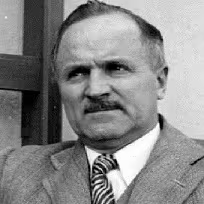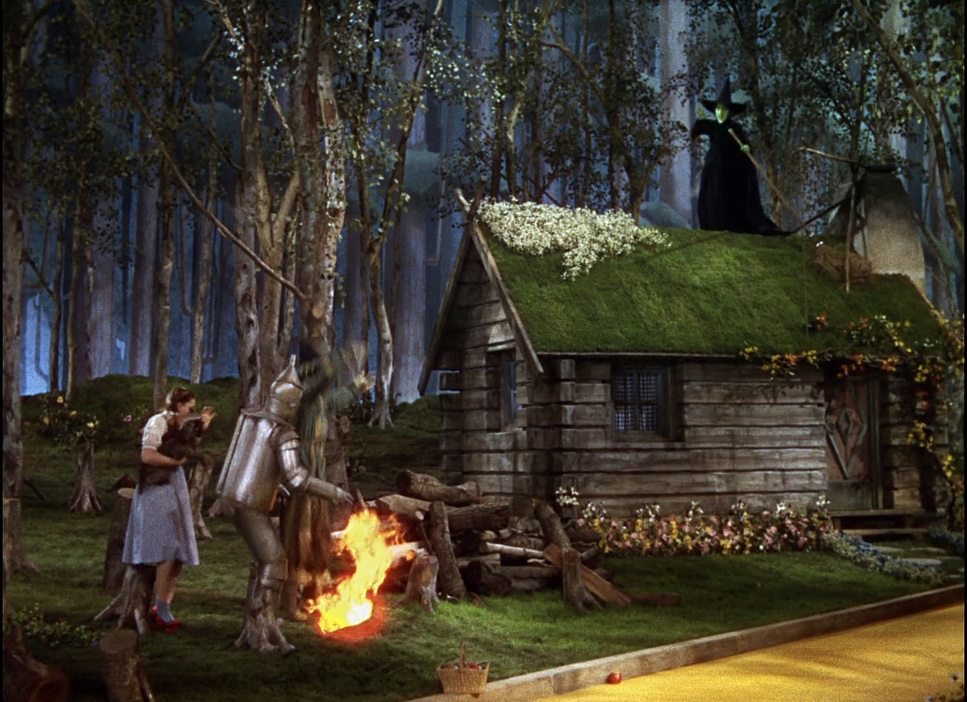One of the most visually iconic films that continue to inspire me is The Wizard of Oz, directed by Victor Fleming. Its groundbreaking use of Technicolor, meticulous compositions, and inventive cinematography provide endless lessons for filmmakers and cinephiles alike. Here’s my perspective on this timeless masterpiece.
About the Cinematographer

The brilliance of The Wizard of Oz lies in no small part in the hands of Harold Rosson, the cinematographer who brought the Land of Oz to life. Rosson, a veteran of Hollywood’s Golden Age, had an uncanny ability to adapt to the demands of evolving technology, making him a perfect fit for this ambitious project. His career spanned silent films and the emergence of sound and color, granting him the experience to navigate the complexities of Technicolor cinematography.
Rosson’s work on The Wizard of Oz seamlessly bridges the fantastical and the relatable. Despite the chaotic production, his cinematography remained a stabilizing force, grounding the narrative while elevating its magical elements. As a filmmaker, I’m particularly drawn to his ability to balance emotional authenticity with the spectacle of fantasy, creating a visual language that has stood the test of time.
Inspiration for the Cinematography of The Wizard of Oz

The visual identity of The Wizard of Oz is deeply rooted in L. Frank Baum’s original book series. Baum’s imaginative descriptions, paired with the vivid illustrations in the books, set the stage for MGM’s ambitious cinematic interpretation. At the time, MGM aimed to create a film that could rival Walt Disney’s Snow White and the Seven Dwarfs, blending fantastical visuals with an emotionally resonant narrative.
The decision to contrast the sepia-toned Kansas with the vibrant Technicolor of Oz was a stroke of genius. It symbolizes Dorothy’s transition from the mundane struggles of her reality to the extraordinary possibilities of her imagination. This thematic duality between the ordinary and the fantastical is a visual metaphor that resonates throughout the film. As I see it, this choice wasn’t just technical—it was deeply narrative-driven, emphasizing Dorothy’s journey of self-discovery.
Camera Movements Used in The Wizard of Oz

Rosson’s use of camera movements in The Wizard of Oz is both deliberate and dynamic, enhancing the film’s sense of wonder. Despite the limitations of 1930s technology, he used tracking shots, pans, and dolly movements to immerse the audience in Dorothy’s journey.
One standout moment is when Dorothy first enters Munchkinland. The camera glides with her, mirroring her awe and our own as viewers encountering this vibrant world. Similarly, the dolly shots in musical sequences like “Follow the Yellow Brick Road” inject rhythm and energy into the scenes, making the audience feel as though they’re part of the journey. These choices were not merely aesthetic—they were designed to heighten the emotional engagement of the audience.
Compositions in The Wizard of Oz

Rosson’s compositions are a masterclass in visual storytelling. In Kansas, the framing is flat and symmetrical, mirroring the monotony of Dorothy’s life. Once in Oz, however, the frames burst with asymmetry, depth, and vibrant details. The iconic yellow brick road serves as both a literal and visual guide, leading viewers deeper into the narrative.
One of my favorite examples is the arrival at Emerald City. Here, the use of scale and perspective emphasizes Oz’s vastness, while Dorothy’s small figure underscores her vulnerability and wonder. The compositions guide the viewer’s eye naturally, ensuring that every detail contributes to the story. For me, this deliberate approach to framing and staging elevates the film beyond mere visual spectacle.
Lighting Style of The Wizard of Oz

Lighting plays a pivotal role in distinguishing the worlds of Kansas and Oz. In Kansas, the lighting is soft and naturalistic, creating a sense of grounded realism. In contrast, Oz is illuminated with vibrant, high-key lighting that enhances the surreal quality of the Technicolor palette.
As a colorist, I admire how Rosson used lighting to evoke emotion and guide the narrative. Glinda’s ethereal glow, achieved through soft backlighting, emphasizes her benevolent nature, while the Wicked Witch’s sharp, shadowy lighting casts her in a menacing light. This interplay of light and shadow not only enhances the fantasy but also reinforces the characters’ roles within the story.
Lensing and Blocking in The Wizard of Oz

The choice of lenses and blocking in The Wizard of Oz was integral to its visual storytelling. Wide-angle lenses were frequently used to capture the expansive sets of Oz, immersing the audience in this fantastical world. The blocking of characters, particularly during group shots, reflects their evolving relationships and individual arcs.
Dorothy’s central placement in many frames reinforces her role as the emotional heart of the story. Meanwhile, the Scarecrow, Tin Man, and Cowardly Lion are often choreographed around her, symbolizing their unity as a team. During tense moments, such as confrontations with the Wicked Witch, the blocking shifts to heighten the drama, with Dorothy often positioned to emphasize her vulnerability.
Color in The Wizard of Oz

The use of color in The Wizard of Oz is perhaps its most iconic feature. The decision to shoot Kansas in sepia tones and Oz in Technicolor created a striking visual contrast that remains unparalleled. This transition wasn’t just a technical choice—it was a narrative device that underscored Dorothy’s journey from hardship to hope.
In Oz, every color choice is deliberate. The lush greens of Emerald City symbolize prosperity and envy, while the vibrant yellows of the brick road convey energy and adventure. Even the Wicked Witch’s green skin serves as a visual shorthand for her malevolence, contrasting sharply with Glinda’s pastel hues. From a colorist’s perspective, the meticulous attention to detail in costumes, sets, and makeup ensured harmony with the Technicolor process, showcasing a level of craftsmanship that continues to inspire.
Technical Aspects of The Wizard of Oz
THE WIZARD OF OZ (1939)
Technical Specifications
| Genre | Psychedelic, Road Trip, Technicolor Musical, Adventure, Family, Fantasy |
| Director | Victor Fleming |
| Cinematographer | Harold Rosson |
| Production Designer | Malcolm Brown, William A. Horning, Jack Martin Smith |
| Costume Designer | Adrian |
| Editor | Blanche Sewell |
| Colorist | Janet Wilson |
| Time Period | 1930s |
| Color | Warm, Desaturated, Sepia |
| Aspect Ratio | 1.37 – Spherical |
| Format | Film – 35mm |
| Lighting | Hard light, Low contrast |
| Lighting Type | Overcast, Artificial light |
| Story Location | United States of America > Kansas |
| Filming Location | Culver City > 10202 W. Washington Blvd |
| Camera | Technicolor Three Strip Camera, Bell and Howell 2709 |
From a technical standpoint, The Wizard of Oz was a groundbreaking achievement. The three-strip Technicolor process required intense lighting and precise coordination, adding to the complexity of the production. Rosson’s ability to navigate these challenges speaks to his expertise and dedication.
The film also employed innovative techniques like matte paintings, practical effects, and early chroma key technology. The twister sequence and Glinda’s bubble stand out as examples of the ingenuity that defined the production. These technical achievements, combined with Rosson’s artistry, set a new standard for cinematic storytelling.
- Also Read: CINEMATOGRAPHY ANALYSIS OF THE ZONE OF INTEREST
- Also Read: CINEMATOGRAPHY ANALYSIS OF VERTIGO (IN DEPTH)
Browse Our Cinematography Analysis Glossary
Explore directors, cinematographers, cameras, lenses, lighting styles, genres, and the visual techniques that shape iconic films.
Explore Glossary →